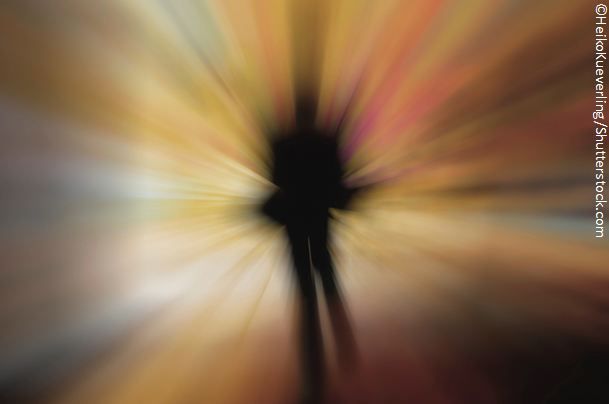- Clinical Technology
- Adult Immunization
- Hepatology
- Pediatric Immunization
- Screening
- Psychiatry
- Allergy
- Women's Health
- Cardiology
- Pediatrics
- Dermatology
- Endocrinology
- Pain Management
- Gastroenterology
- Infectious Disease
- Obesity Medicine
- Rheumatology
- Nephrology
- Neurology
- Pulmonology
Parasomnias: Q & A
Parasomnias result from a blurring between stages of sleep. See if answers to any of these 6 questions are clear to you.
Parasomnias are a result of blurring between sleep stages.

Parasomnias are defined as undesirable physical events or experiences that occur during initiation of sleep, during sleep, or during arousal from sleep. Although they are seen more often in children, parasomnias can occur at any age.
See what you know about these in-between-states of consciousness.
1. Parasomnias commonly occur in the transition between the awake state and which stages of sleep?
A. Stage I/II
B. Stage II/III
C. Stage III/IV
D. Both B and C
Please click here for answer, discussion, and next question.
Answer: C. Stage III/IV
Parasomnias are the result of “blurring” during transitions between sleep stages, most commonly between stages III/IV and the awake state. They can also happen when initiating sleep. This causes behaviors like sleepwalking, sleep terrors, sleep talking, and sleep paralysis during which the person is not fully aware of his/her actions. Stage I sleep represents a transition between wake and sleep. Stage II constitutes most of the sleeping period. Stage III and IV usually occur during the first half of the night.
2. Differentiating between rapid-eye movement (REM) and non-REM (NREM) parasomnias is important because:
A. The prognosis and treatment are different
B. REM parasomnias are more often linked to underlying neurologic problems
C. REM parasomnias include sleep terrors in which the patient may injure himself or others
D. A and B
E. B and C
Please click here for answer, discussion, and next question.
Answer: A and B
The treatment and prognosis is different for REM- compared to NREM-related parasomnias. REM parasomnias usually develop in later life and are associated with degenerative brain diseases. They include REM sleep behavior disorder, sleep paralysis, and nightmare disorder. Eyes are usually closed, and the sleeper usually can remember dreams related to the behavior. NREM parasomnias commonly occur in individuals aged 5-25 years, and usually resolve with age. NREM parasomnias include confusional arousals, sleep terrors, and sleepwalking. Sleeptalking and sleep-related eating disorder also arise from NREM sleep. The eyes are usually open, and the sleeper usually does not remember the behaviors. NREM parasomnias usually happen in the first third of the night, and REM parasomnias occur in the last third.
3. Which of the following describes exploding head syndrome:
A. A REM parasomnia common in Parkinson disease
B. Perception of a sudden loud noise when falling asleep or awakening
C. Perception of extreme pressure in the head
D. A and B
E. A and C
Please click here for answer, discussion, and next question.
Answer: B. Perception of a sudden loud noise when falling asleep or awakening
Exploding head syndrome is relatively rare and does not easily fall into REM or NREM parasomnia categories. A person who suffers from exploding head syndrome perceives a sudden loud noise when falling asleep or awakening. The symptoms may be mistaken for a stroke. Single episodes are common, but the problem can also occur in clusters. If the problem affects daytime functioning, medication may be warranted.
4. All of the following are associated with REM sleep behavior disorder except:
A. Substance abuse/withdrawal
B. Neurologic disease
C. Anorexia nervosa
D. Posttraumatic stress disorder
Please click here for answer, discussion, and next question.
Answer: C. Anorexia nervosa
REM sleep behavior disorder is characterized by excessive muscle tone, twitches, and movements that look like dream enactments and can potentially cause harm. Acute REM sleep behavior disorder can sometimes occur during REM rebound, such as during substance withdrawal and when continuous positive airway pressure is initiated for obstructive sleep apnea. The chronic form more often occurs in men over age 50 years and is linked to underlying neurologic disease like Parkinson disease, Lewy body dementia, and stroke. Narcolepsy and posttraumatic stress disorder are sometimes associated with the chronic form of this disorder.1
5. Which of the following can precipitate parasomnias in susceptible individuals?
A. Sleep deprivation
B. Substance abuse or withdrawal
C. Medications
D. All of the above
Please click here for answer, discussion, and next question.
Answer: D. All of the above
Some parasomnias can be precipitated by sleep deprivation related to poor sleep hygiene, stress, shift work, and caregiving to young children or ill family members. Substance abuse and withdrawal can also contribute. Medications that cause alertness, like second-generation antidepressants, SSRIs, SNRIs, stimulants, and dopamine agonists can also contribute. Medical problems that cause pain and interfere with sleep can also play a role. Other disorders that interfere with sleep can be involved, including sleep apnea, periodic limb movement disorder, and restless leg syndrome. As previously mentioned, underlying neurologic disorders can also contribute.
6. Nightmare disorder has a strong association with psychiatric illness.
A. True
B. False
Please click here for answer and discussion.
Answer: A. True
Nightmare disorder is considered a REM parasomnia and involves intense dreams that cause anxiety, anger or disgust, and lead to lengthy awakenings. Compared to sleep terrors which are considered a NREM disorder in which the sleeper has patchy recall of their dreams, the sleeper with nightmare disorder has very vivid recall of the nightmare. Nightmare disorder is commonly associated with post-traumatic stress disorder and acute stress disorder. Antidepressants, antihypertensives and dopamine receptor agonists can also cause nightmares.
This Q & A is based on the review below, which we highly suggest as additional reading for those interested in more information.
The editors.
References:
Fleetham JA, Fleming JA. Parasomnias. CMAJ. 2014 May 13;186(8):E273-80. doi: 10.1503/cmaj.120808. Epub 2014 May 5.
